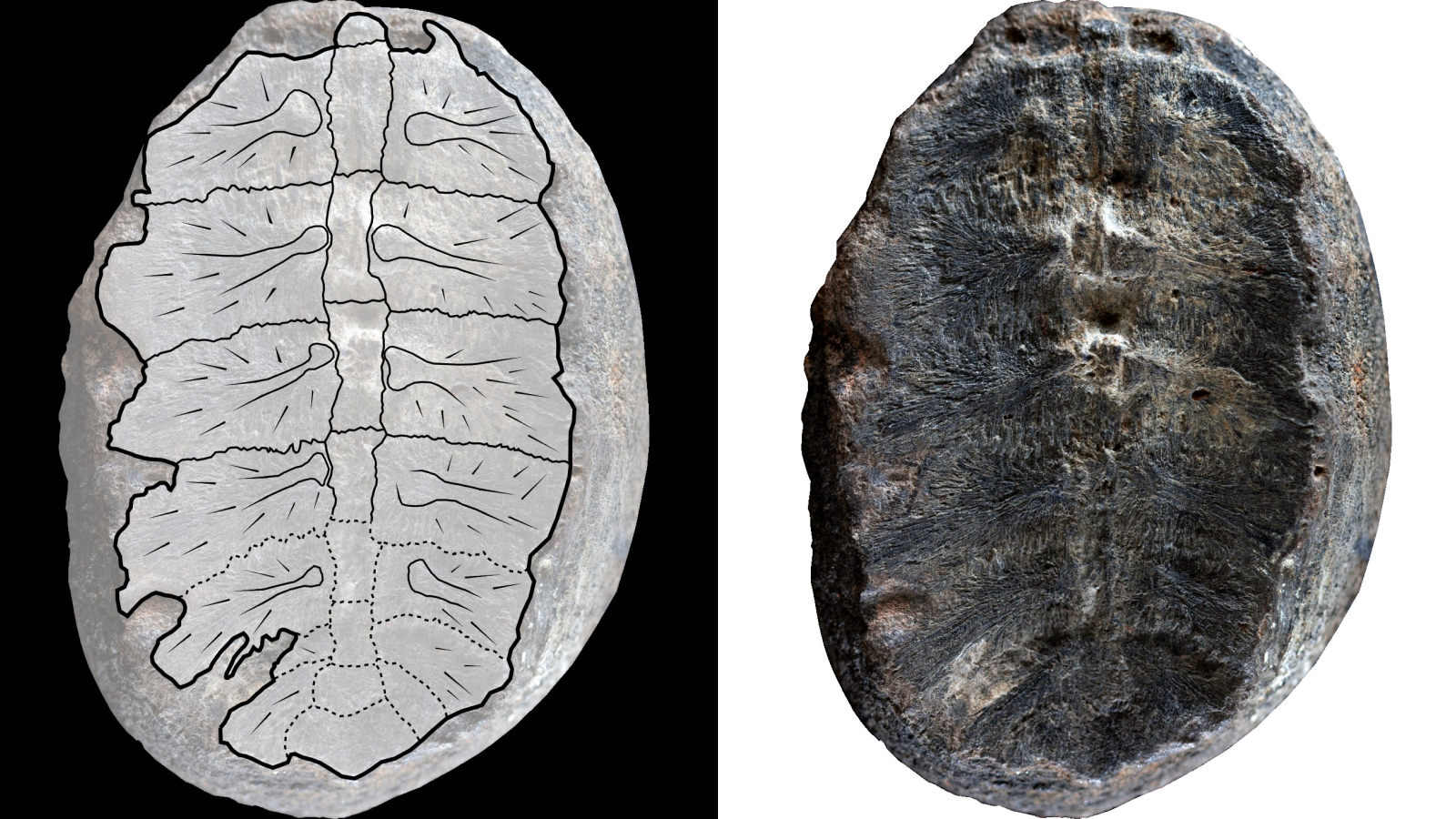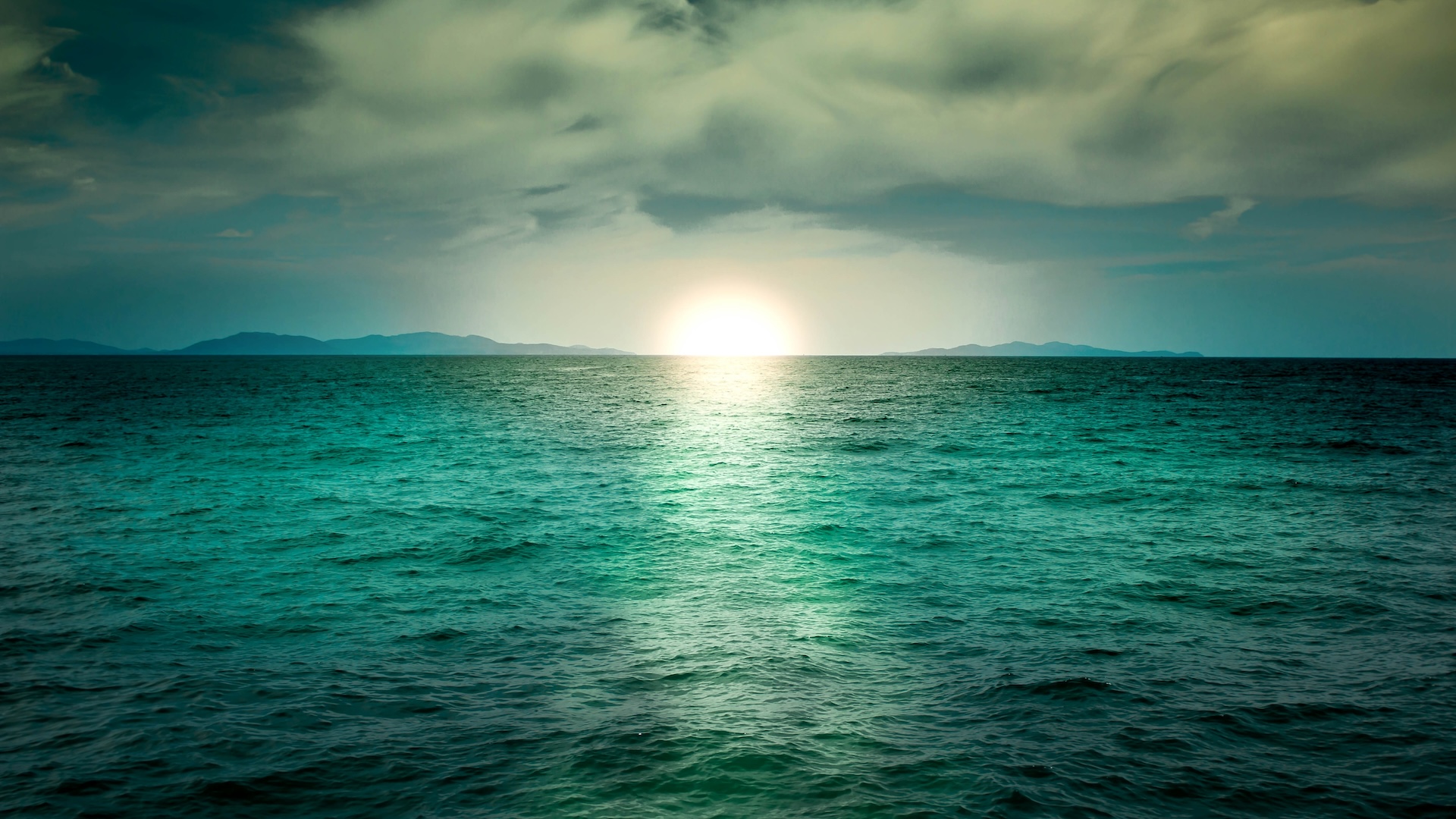120 million-year-old 'plants' turn out to be ultra-rare fossilized baby turtles
A new study re-examining old fossils collected by a Colombian priest more than 50 years ago has found they are actually rare hatchling turtles.

Two ancient plant fossils collected by a Colombian priest more than 50 years ago are actually rare hatchling turtles from the age of the dinosaurs, a new study has found.
Padre Gustavo Huertas collected the leaf-shaped fossils near the town of Villa de Leyva between the 1950s and 1970s and later identified them as extinct plants. But the authors of a new study, published Dec. 7 in the journal Palaeontologia Electronica, have now revealed they aren't leaves at all — they're tiny turtle shells.
The fossils, which measure 2 inches (5 centimeters) and 2.4 inches (6 cm) long respectively, date back to the Aptian age (125 million to 113 million years ago) of the Cretaceous (145 million to 66 million years ago). They are the first hatchling marine turtles on record from that period in northern South America.
The find was "truly surprising," study lead author Héctor Palma-Castro, a paleobotany student at the National University of Colombia, said in a statement released by the Field Museum in Chicago.
Related: Ancient Transylvanian turtle survived the extinction of the dinosaurs
Huertas originally described the fossils as Sphenophyllum colombianum, which placed them in a group of plants that otherwise lived between the Late Devonian (419.2 million to 358.9 million years ago) and the Permian (298.9 million to 251.9 million years ago).
The unusual age and locality of these fossils caught the eye of Palma-Castro and his supervisor, co-author Fabiany Herrera, the assistant curator of fossil plants at the Field Museum, and the pair decided to re-examine them.
Sign up for the Live Science daily newsletter now
Get the world’s most fascinating discoveries delivered straight to your inbox.
"As soon as we photographed them, we thought, 'this is weird,'" Herrera said.
The shape and margins of the supposed leaves didn't resemble a plant, and the lines on the fossils looked less like veins and more like bone to Herrera, so he reached out to one of his old colleagues for help, co-author Edwin-Alberto Cadena, a paleontologist at the University of Rosario in Bogotá.
The team determined that the fossils came from the upper shells of marine turtles. Based on the size and thickness of the shells and the growth patterns of living turtles, they concluded that the animals were no more than 1 year old when they died.
"This is actually really rare to find hatchlings of fossil turtles in general," Cadena said. "When the turtles are very young, the bones in their shells are very thin, so they can be easily destroyed."
The authors wrote in the study that the shells could be from Desmatochelys padillai — the oldest sea turtle on record — found in the same fossil deposits, but they couldn't be sure without a complete hatchling skeleton. "In paleontology, your imagination and capacity to be amazed are always put to the test," Palma-Castro said. "Discoveries like these are truly special because they not only expand our knowledge about the past but also open a window to the diverse possibilities of what we can uncover."
These aren't the first Cretaceous fossils from Colombia to be misidentified. Previous research has revealed that a purported cocoa plant was actually part of a marine reptile jaw, while a presumed Cretaceous fruit turned out to be a banana-shaped rock, according to the study.
"We resolved a small paleobotanical mystery, but more importantly, this study shows the need to re-study historical collections in Colombia," Herrera said.

Patrick Pester is the trending news writer at Live Science. His work has appeared on other science websites, such as BBC Science Focus and Scientific American. Patrick retrained as a journalist after spending his early career working in zoos and wildlife conservation. He was awarded the Master's Excellence Scholarship to study at Cardiff University where he completed a master's degree in international journalism. He also has a second master's degree in biodiversity, evolution and conservation in action from Middlesex University London. When he isn't writing news, Patrick investigates the sale of human remains.










